Last updated on
Discover the ideal hole size for your kitchen faucet to ensure a perfect fit and seamless installation in this informative guide.
When it comes to renovating your kitchen, choosing the right faucet can be a daunting task. With so many styles and finishes available, it’s easy to get caught up in the aesthetics and forget about one important detail: the size of the hole needed for installation.
Installing a faucet with the wrong size hole can result in leaks, wobbling, or even damage to your sink. In this article, we’ll guide you through everything you need to know about choosing the right size hole for your kitchen faucet installation.
So grab a cup of coffee and let’s dive in!
Key takeaways:
- Standard kitchen faucet hole sizes: 1-3/8 inches for single-hole faucets, 4 inches for centerset or widespread faucets.
- Faucet hole size variations by brand: Check manufacturer’s specifications for the recommended hole size.
- Kitchen faucet sizes variation: Consider height, reach, and sink size.
- Single handle faucet hole specifications: Standard size is 1-3/8 inches, consider sink depth and backsplash clearance.
- Double handle faucet hole guidelines: Three holes, 8 inches apart for centers, adjustable spacing available.
What's Inside
Standard Kitchen Faucet Hole Sizes
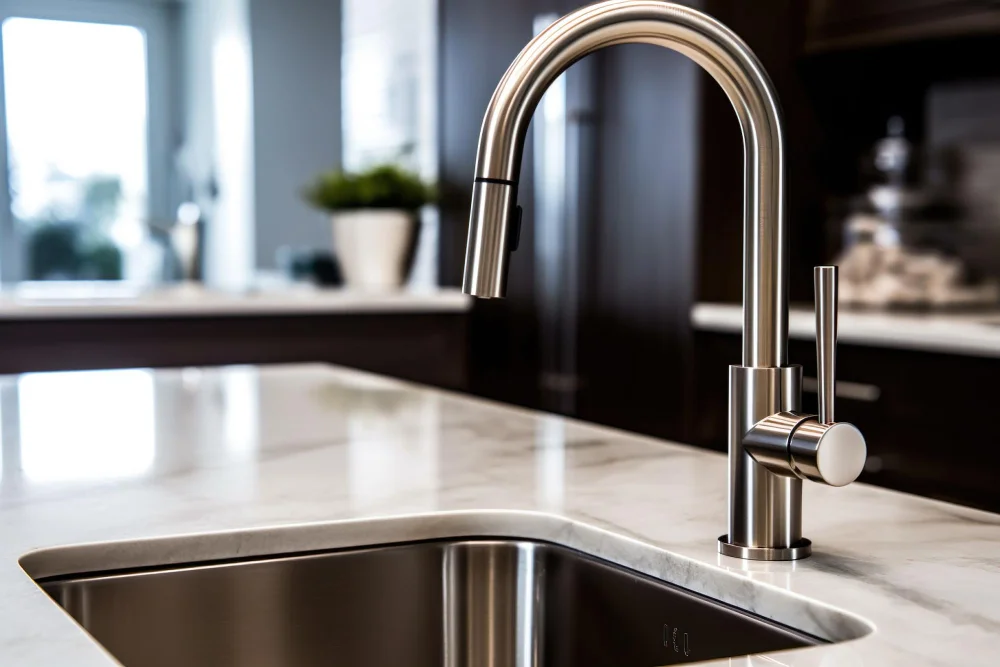
When it comes to kitchen faucet hole sizes, there are a few standard measurements that you should be aware of. The most common size for a single-hole kitchen faucet is 1-3/8 inches in diameter.
This size works well with most faucets and provides enough space for the water supply lines to fit through.
If you’re installing a centerset or widespread faucet, the standard distance between the handles is typically 4 inches. For these types of faucets, you’ll need three holes: one for each handle and one for the spout.
It’s important to note that while these are considered “standard” sizes, not all manufacturers adhere strictly to them. Some brands may have slightly different requirements or offer more options when it comes to hole sizes and spacing.
Before purchasing your new kitchen faucet, make sure to check with the manufacturer’s specifications regarding their recommended hole size and spacing requirements.
Faucet Hole Size Variations By Brand
For example, some popular brands like Delta and Kohler require a 1-3/8 inch diameter hole for their standard kitchen faucets, while others like Moen and Pfister require a slightly larger 1-1/2 inch diameter hole. It’s always best to check the manufacturer’s specifications before purchasing your new faucet to ensure it will fit properly in your sink.
Some high-end or specialty faucets may have unique installation requirements that differ from standard sizes. These types of faucets often come with detailed instructions or even templates for cutting custom holes in your countertop or sink.
By doing research on the specific brand and model of faucet you’re interested in installing, you can avoid any potential headaches down the road due to improper sizing.
Kitchen Faucet Sizes Variation
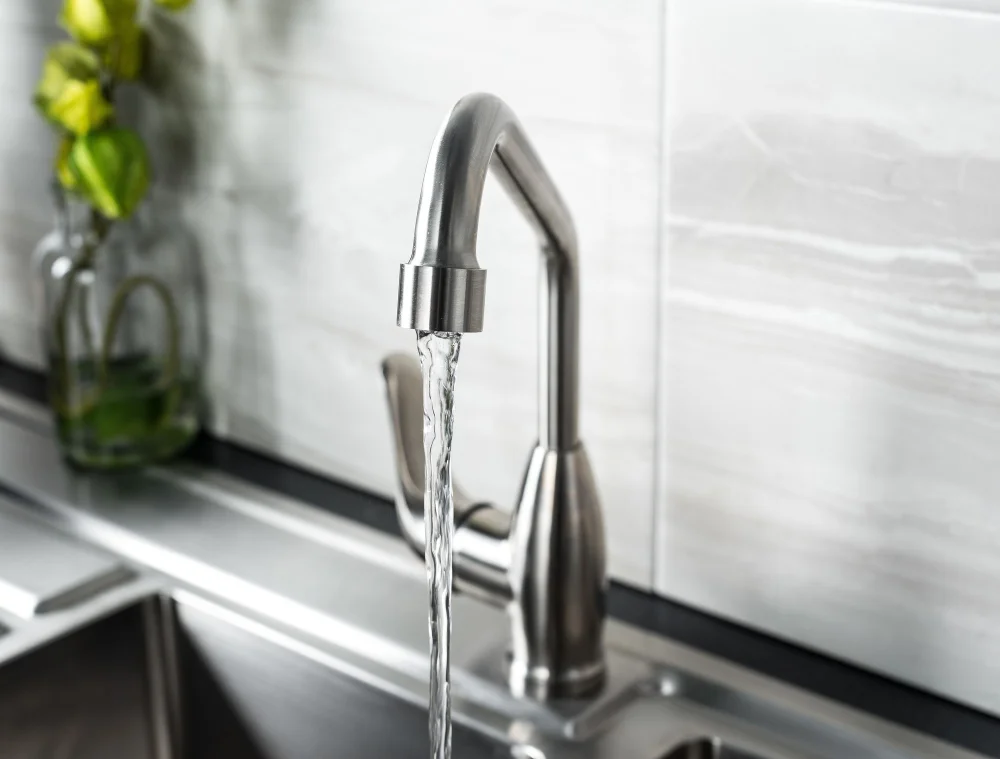
The size of your faucet will depend on a variety of factors, including the type of sink you have and the style of faucet you choose. Some faucets are designed for smaller sinks or spaces with limited clearance, while others are meant to make a statement in larger kitchens.
One important consideration when choosing a kitchen faucet is its height. A taller spout can be more convenient for filling large pots or washing dishes, but it may not fit well in smaller kitchens with low-hanging cabinets or shelves.
Another factor to consider is the reach of your faucet’s spout – that is, how far out from the base it extends into your sink basin. This measurement can affect how much space you have available for washing dishes and preparing food.
Ultimately, finding the right size kitchen faucet requires careful consideration based on your specific needs and preferences as well as any limitations posed by your existing plumbing setup or countertop design.
Single Handle Faucet Hole Specifications
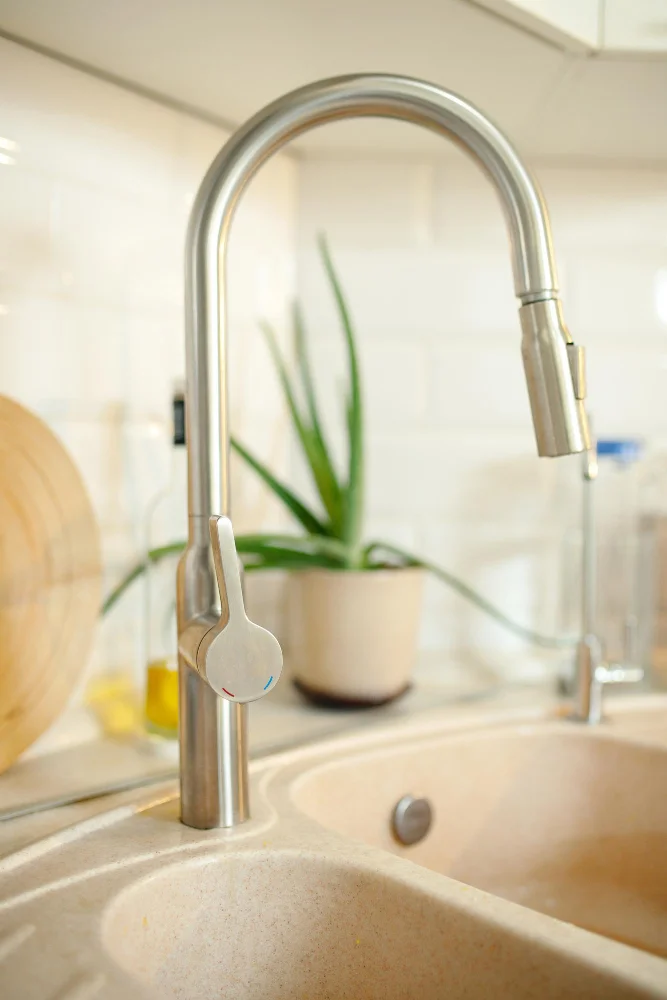
The standard size of the hole needed for single-handle faucet installation is 1-3/8 inches in diameter. However, some manufacturers may have different specifications, so it’s always best to check the product manual or consult with a professional before making any modifications to your sink.
When installing a single handle faucet, make sure that there is enough space between the spout and backsplash or wall behind it. This will ensure that you can easily turn on and off the water without hitting anything else.
It’s also important to consider how deep your sink is when choosing a single handle faucet as this will affect how far out from the wall or backsplash you need to install it. If your sink has an integrated sprayer hose attachment feature built-in then be sure not block access by placing too close against walls etc., which could cause damage over time due constant rubbing against surfaces during use.
Double Handle Faucet Hole Guidelines
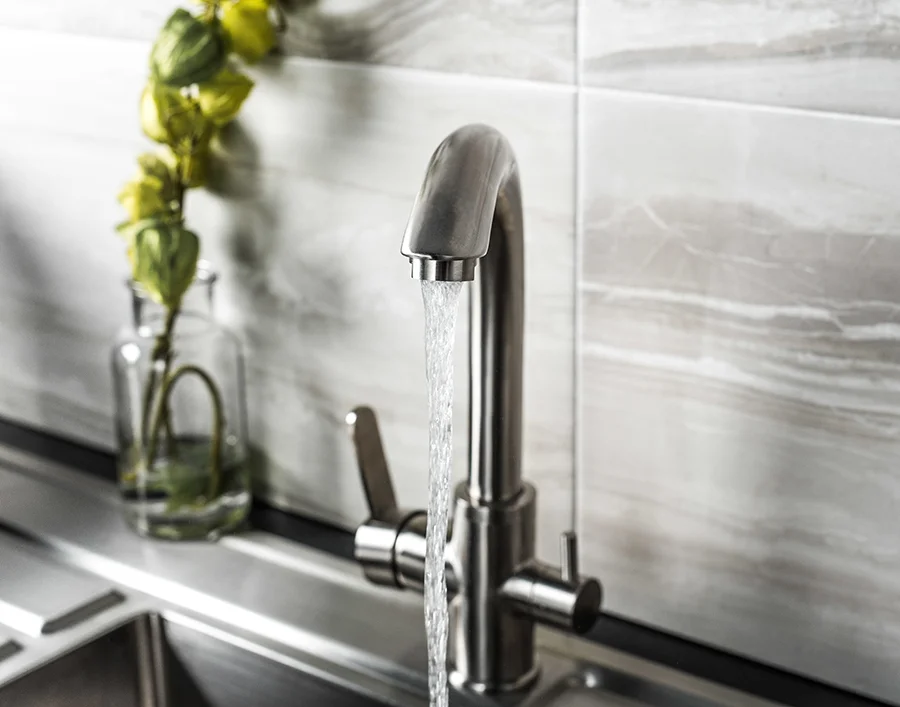
Double handle faucets require three holes: one for each of the handles and one in between them for the spout. The distance between these holes should be 8 inches apart from center to center.
It’s important to note that not all double-handle faucets have this standard measurement, so always check with your manufacturer before drilling any holes in your sink or countertop.
Some manufacturers offer adjustable centers on their double-handle faucets. This means that you can adjust the distance between handles according to your preference or existing hole configuration.
Pull-Out and Pull-Down Faucet Hole Distances
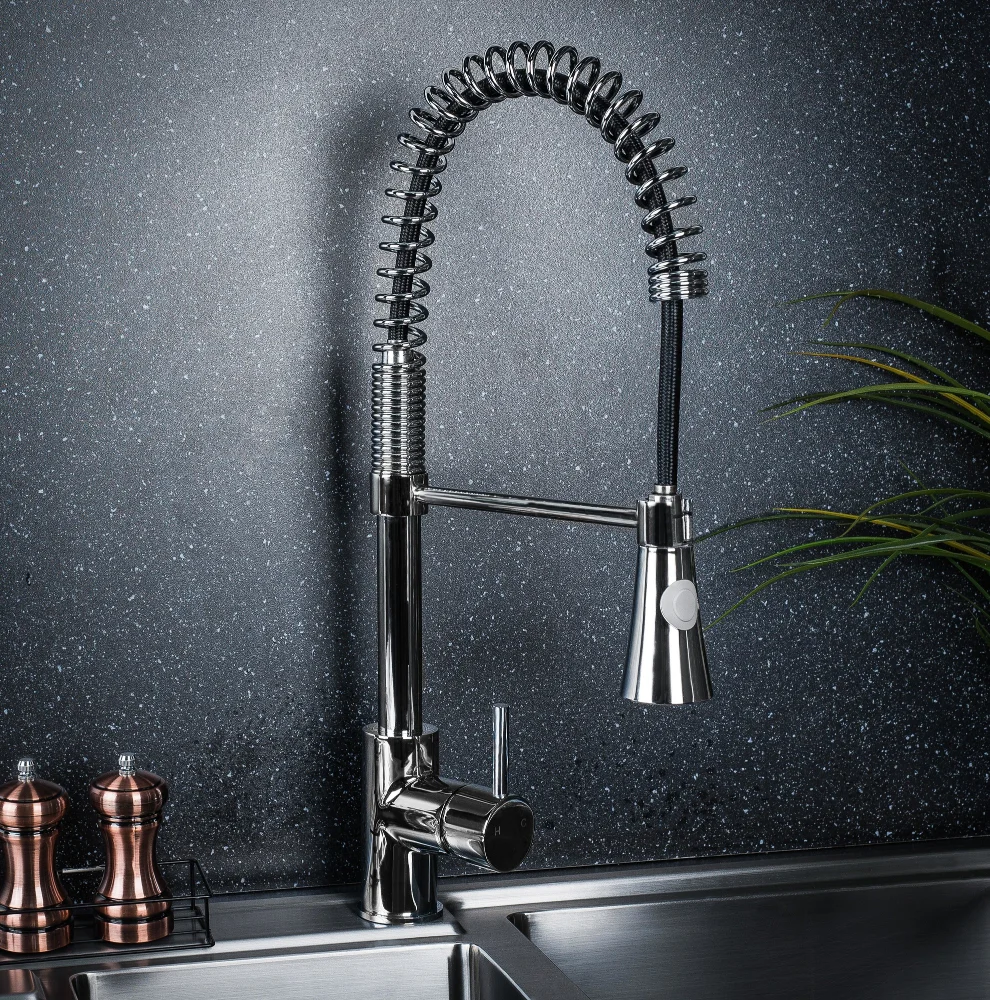
These types of faucets require a larger hole size than traditional ones, typically ranging from 1-3/8 inches to 2-1/2 inches in diameter. The distance between the faucet holes should also be taken into consideration when installing a pull-out or pull-down faucet.
The recommended distance between the center of the main faucet hole and any additional holes is usually around 4 inches, but this can vary depending on the specific model you choose. It’s important to check with your manufacturer’s guidelines before drilling any holes in your sink or countertop.
When measuring for a pull-out or pull-down kitchen faucet installation, it’s essential to consider not only the size of your sink but also its depth. A deeper sink may require an extension kit that allows you to install longer hoses so that they can reach all corners easily.
Single-Hole Faucets
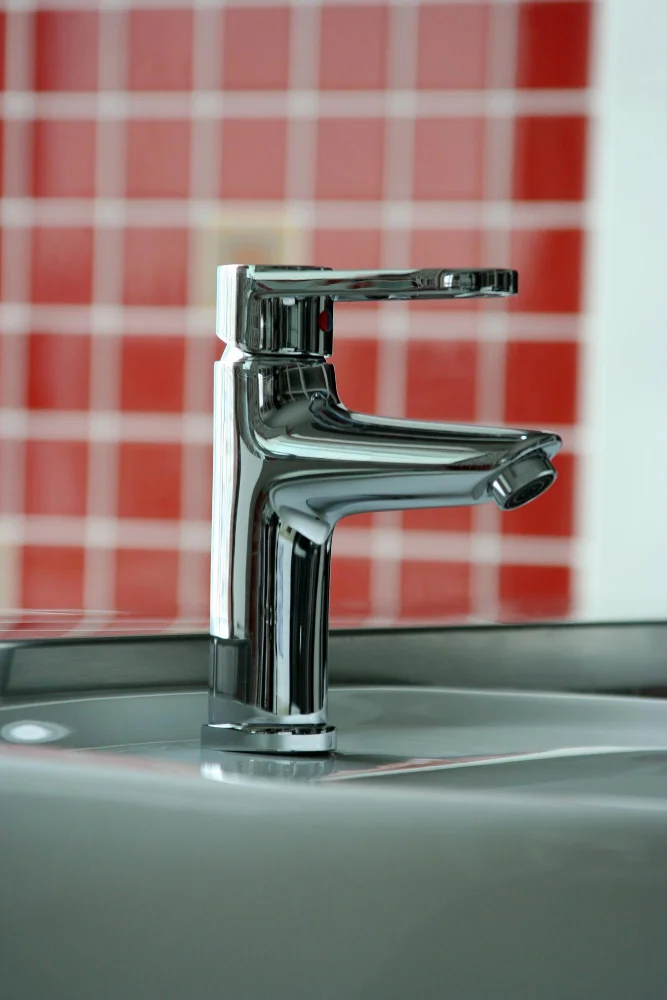
As the name suggests, these types of faucets require only one hole in the sink or countertop for installation. This makes them an excellent option if you’re looking to save space or want a clean and uncluttered look.
When choosing a single-hole faucet, it’s essential to consider its size and style carefully. Some models may be too tall or wide for your sink, while others may not match your kitchen’s overall aesthetic.
It’s also important to note that some single-hole faucets come with an optional deck plate that can cover additional holes in your sink if needed. This is especially useful if you’re replacing an older faucet with multiple holes but don’t want to replace the entire sink.
Single-hole faucets offer both practicality and style options when it comes time for kitchen renovation projects.
Centerset Faucets
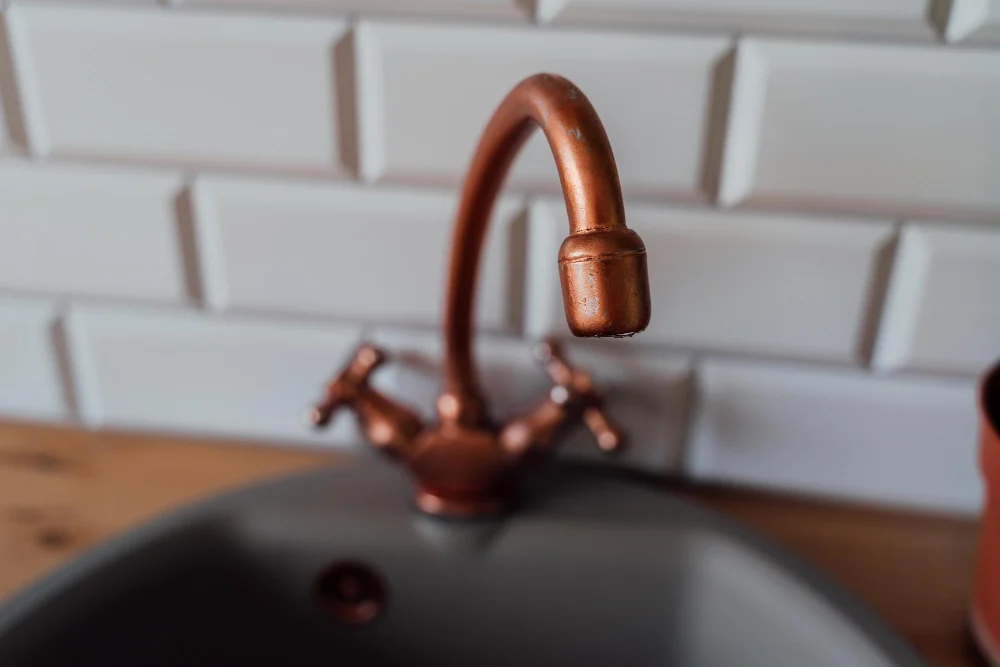
These types of faucets feature two handles that are mounted on a base plate, which is designed to cover the holes in your sink. Centerset faucets typically require three holes for installation, with one hole for the spout and two additional holes for each handle.
When choosing a centerset faucet, it’s important to measure the distance between the center of each handle. This measurement is known as “center-to-center” or “CTC.” Most centerset faucet models have either 4-inch or 8-inch CTC measurements.
If you’re replacing an existing centerset faucet and want to avoid drilling new holes in your countertop or sink, make sure you choose a model with matching hole spacing. It’s also important to consider other factors such as finish options and features like pull-out sprayers or soap dispensers when selecting your new centerset kitchen faucet.
Minispread Faucets
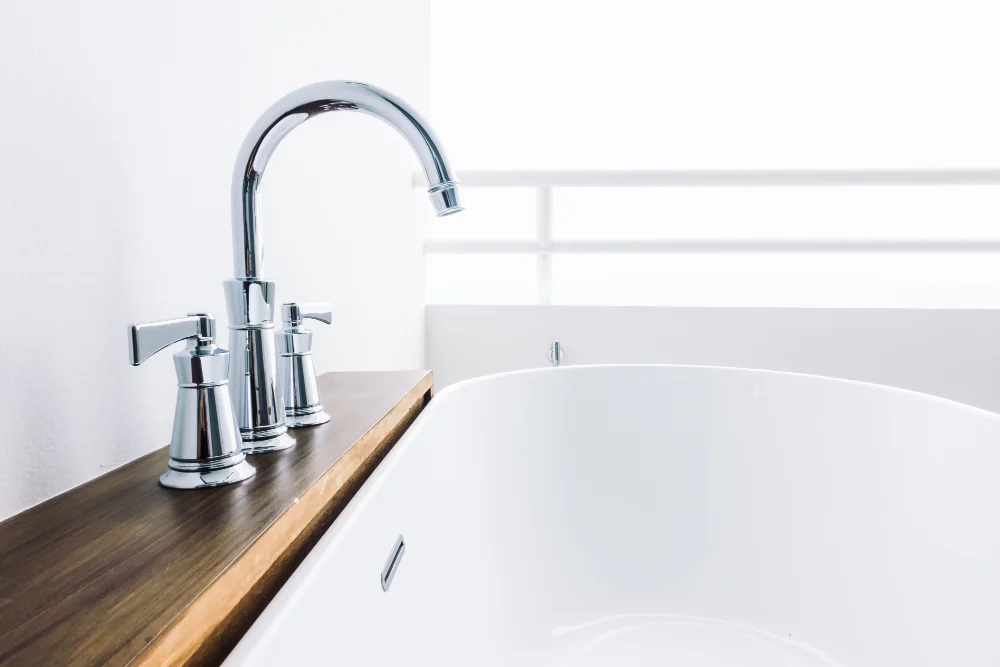
These types of faucets typically have three separate pieces: two handles and the spout, which are mounted on a base plate that covers three holes in the sink. The distance between these holes is usually 4 inches, making them an ideal option for smaller sinks or countertops.
When choosing a minispread faucet, it’s important to consider the size and style of your sink as well as your personal preferences. Some models come with swivel spouts that allow you to direct water flow where you need it most while others feature pull-out sprayers for added convenience.
It’s also worth noting that some minispread faucets may require additional installation steps compared to other types due to their unique design. However, with proper planning and preparation, installing one can be done easily by following manufacturer instructions or hiring professional help if needed.
Widespread Faucets
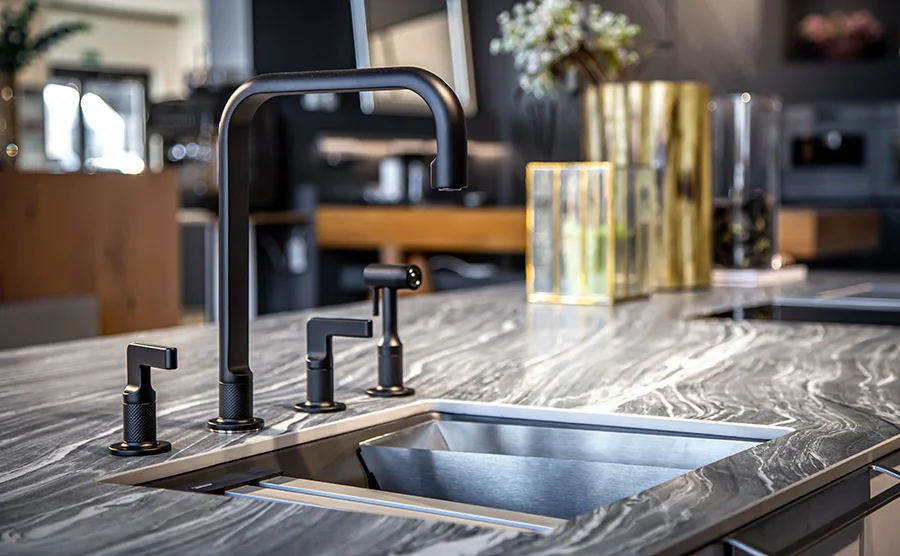
These types of faucets feature three separate pieces: two handles and the spout, which are all mounted separately onto the sink or countertop. The distance between the handles can vary from 6 inches up to 16 inches, making them ideal for larger sinks or countertops.
When choosing a widespread faucet, it’s important to consider not only its style but also its functionality. Make sure that you measure your sink or countertop carefully before purchasing one so that you get the right size faucet with proper hole spacing.
Another thing worth noting is that widespread faucets tend to be more expensive than other types due in part because they require more materials and labor during installation.
Vessel Faucets
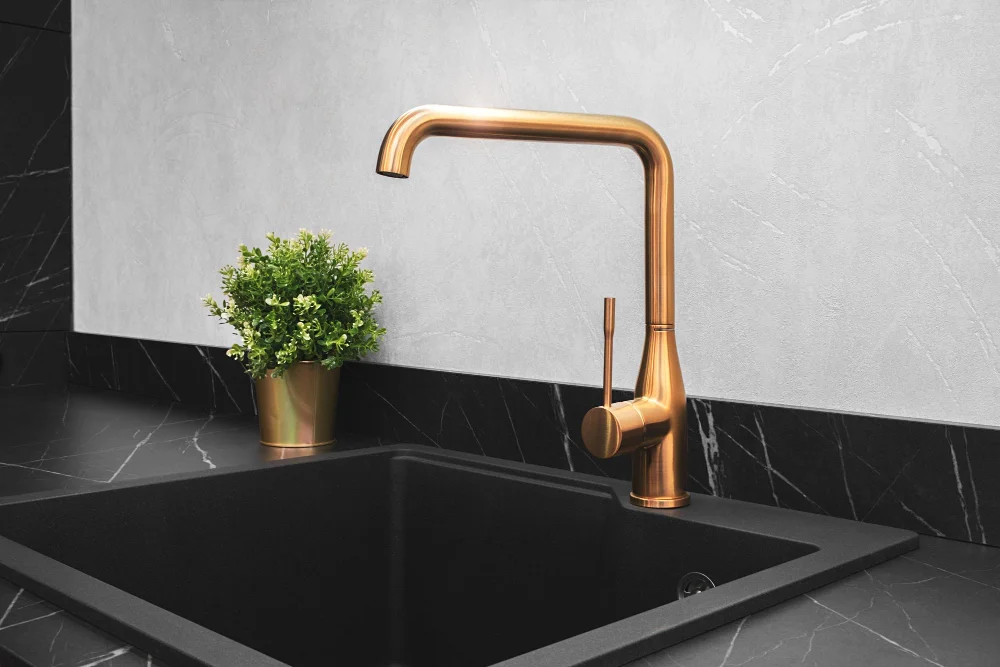
These types of faucets are designed to be installed on top of the sink, rather than through it like traditional faucets. Vessel sinks have become increasingly popular in recent years, and vessel faucets offer a sleek and stylish complement to these unique fixtures.
When choosing a vessel faucet, it’s important to consider the height of the spout. The spout should be tall enough so that water can easily flow into the sink without splashing over the sides.
You’ll want to ensure that there is enough clearance between your countertop or backsplash and the faucet handle.
Most vessel sinks require either a single-hole or wall-mount installation for their corresponding vessels’ taps; however some models may require two holes depending on their design specifications.
Wall-Mounted Faucets
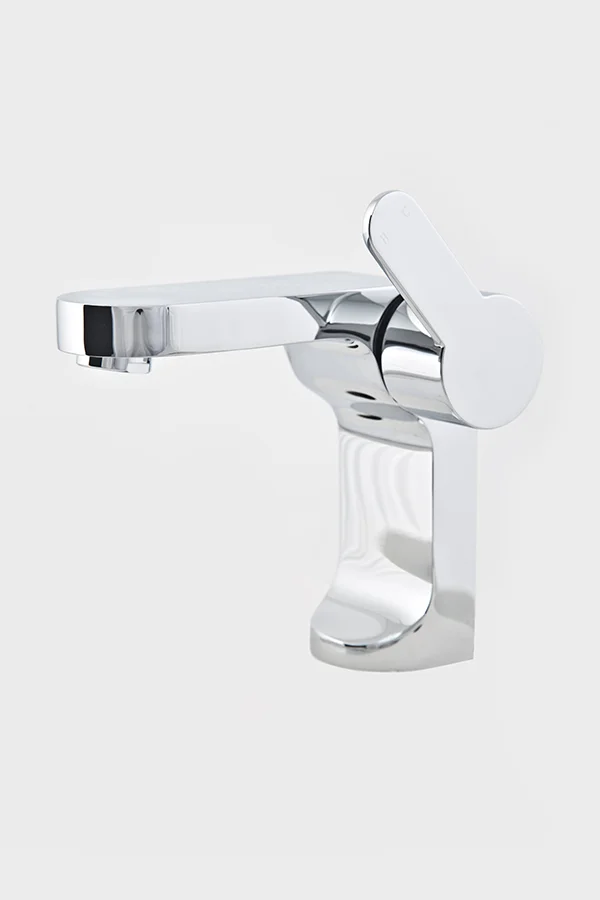
These types of faucets are installed directly into the wall above the sink, rather than on the countertop or sink itself. This installation method allows for more counter space and easier cleaning around the sink area.
When it comes to choosing a wall-mounted faucet, it’s important to consider both style and functionality. Wall-mounted faucets come in various sizes and styles that can complement any kitchen design scheme.
One thing to keep in mind when installing a wall-mounted faucet is that plumbing must be run through the walls before installation can take place. This means that proper planning is necessary before beginning any renovation work.
Kitchen Faucet Hole Spacing
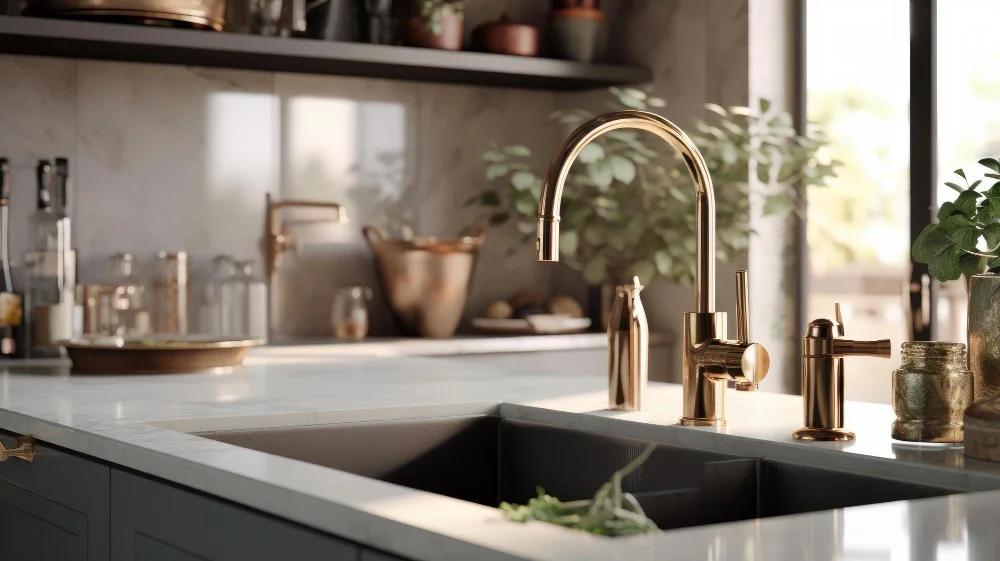
The standard distance between the outer holes of a three-hole sink is 8 inches, while for four-hole sinks, it’s usually 6-16 inches. However, some manufacturers offer faucets with adjustable hole distances that can fit various configurations.
It’s essential to measure the distance between your existing faucet holes accurately before purchasing a new one. If you’re replacing an old faucet and want to install one with different hole spacing or configuration than what you currently have, you may need additional drilling on your countertop or sink.
Moreover, if you’re installing a deck-mounted kitchen faucet (one that sits on top of the counter), make sure there’s enough space behind it for proper operation and maintenance. A good rule of thumb is to leave at least two inches clearance from any backsplash or wall surface.
Kitchen Faucet Hole Spacing plays an important role in ensuring proper installation and functionality of your new fixture.
Standard Faucet Hole Spacing
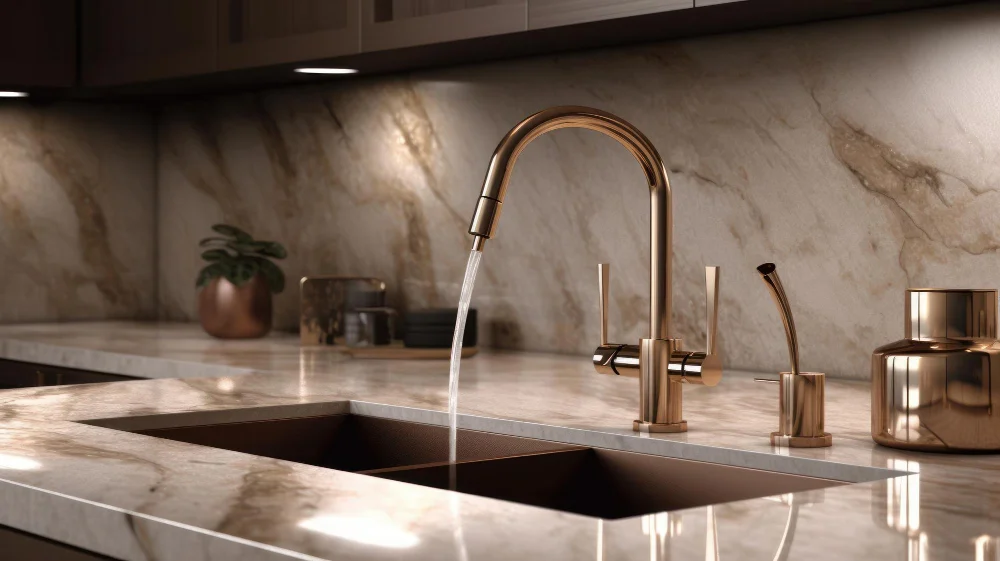
The most common is the 8-inch widespread faucet, which features three separate pieces: two handles and a spout. These pieces are typically spaced 8 inches apart from center to center.
Another popular option is the centerset faucet, which combines both handles and the spout into one unit. Centerset faucets usually have holes spaced 4 inches apart from center to center.
If you’re looking for something more compact or modern-looking, single-hole faucets may be your best bet. As their name suggests, these types of faucets require only one hole for installation.
It’s important to note that while these measurements are considered standard in the industry, not all sinks will necessarily conform exactly to them.
Measuring Faucet Hole Diameter
To measure the diameter, you’ll need a ruler or tape measure. First, locate the center of the existing hole by measuring from one edge to another and dividing that number in half.
Then, place your ruler across this center point and measure from one side of the hole to its opposite side.
It’s important to note that some faucets may require additional holes for accessories such as soap dispensers or sprayers. Be sure to check with your manufacturer’s specifications before drilling any extra holes.
How to Measure Faucet Hole Size
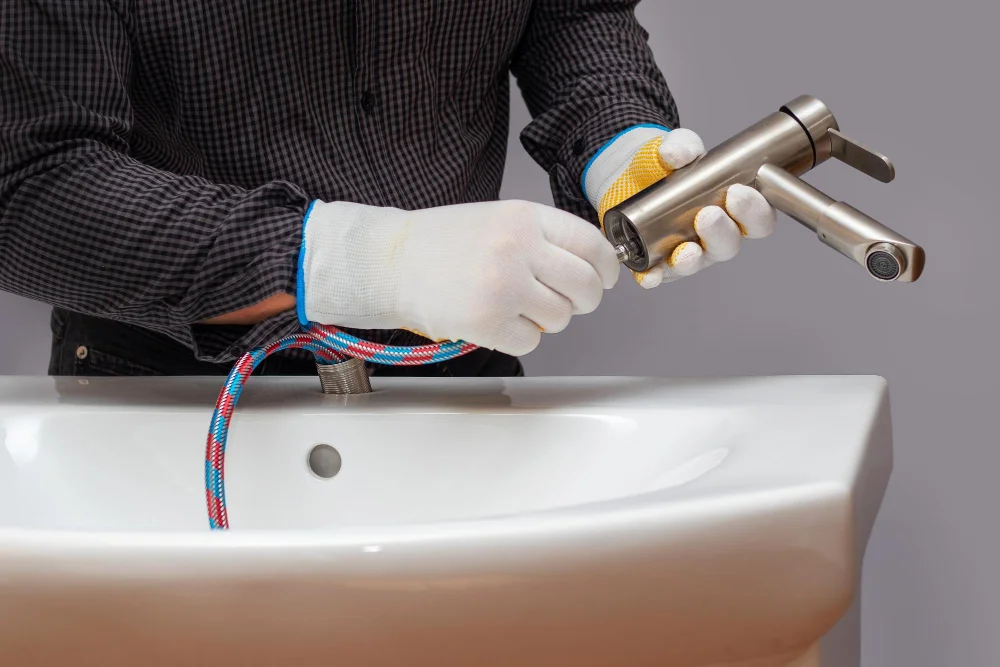
To measure, you’ll need to determine both the diameter and spacing of your existing holes. Start by measuring from one edge of the hole to its opposite side, then divide that number by two to find its radius.
This will give you an accurate measurement for determining which size faucet will fit properly.
Next, measure the distance between each hole center if there are multiple holes present on your sink or countertop. The standard distance between centers for three-hole installations is 4 inches while four-hole installations have a center-to-center spread ranging from 6-16 inches.
If you’re unsure about how to accurately measure your sink’s dimensions or don’t feel comfortable doing it yourself, consider consulting with a professional plumber or contractor who can help ensure that everything fits perfectly before installation day arrives.
Faucet Hole Size for Different Sink Types

For example, drop-in sinks typically have pre-drilled holes for faucets and accessories, while undermount sinks do not. If you’re installing an undermount sink, you’ll need to consider the size and placement of your faucet carefully.
Farmhouse or apron-front sinks are another popular option that requires special consideration when it comes to choosing a faucet. These large, deep basins often feature an exposed front panel that extends beyond the edge of the countertop.
As such, they may require a longer spout reach or higher clearance than other sink types.
When selecting your kitchen faucet for any type of sink installation project, be sure to consult with manufacturer guidelines and specifications before making any final decisions on hole size or placement.
Sink Material and Faucet Hole Range
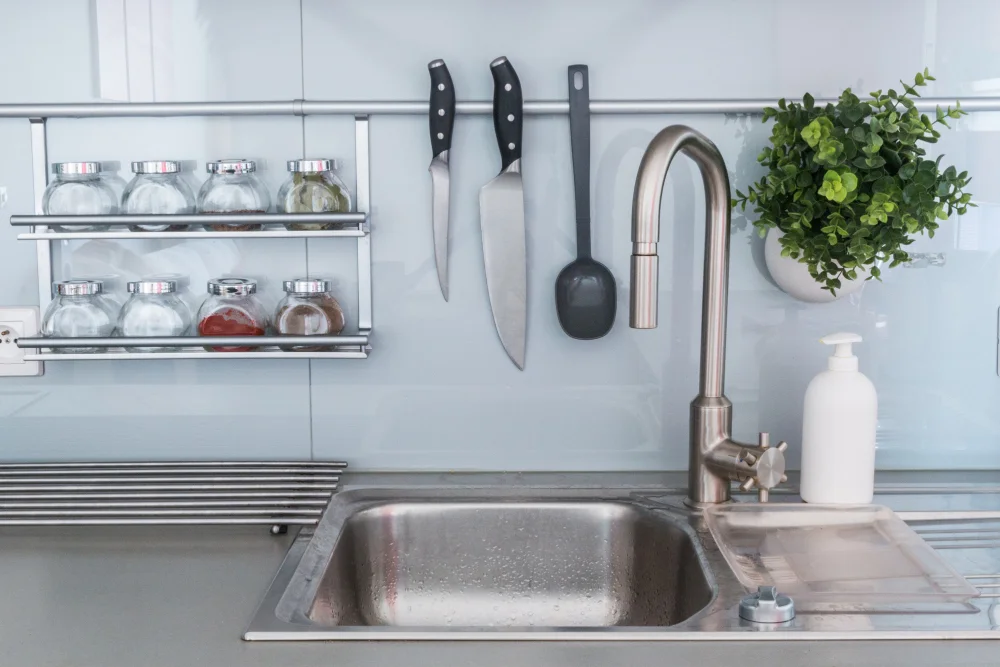
Different materials have different ranges of acceptable hole sizes and spacing. For example, stainless steel sinks are more flexible in terms of hole placement and sizing because they can be drilled without causing damage or cracking.
On the other hand, porcelain or ceramic sinks require more precision when drilling holes due to their fragile nature.
It’s also worth noting that some sink materials may limit your options for certain types of faucets. For instance, vessel sinks typically require a single-hole faucet installation due to their raised bowl design.
Before making any decisions about which size hole you need for your kitchen faucet installation, make sure you take into account both the type and material of your sink as well as any limitations that may come with them.
Deck Plate Usage and Faucet Hole Options
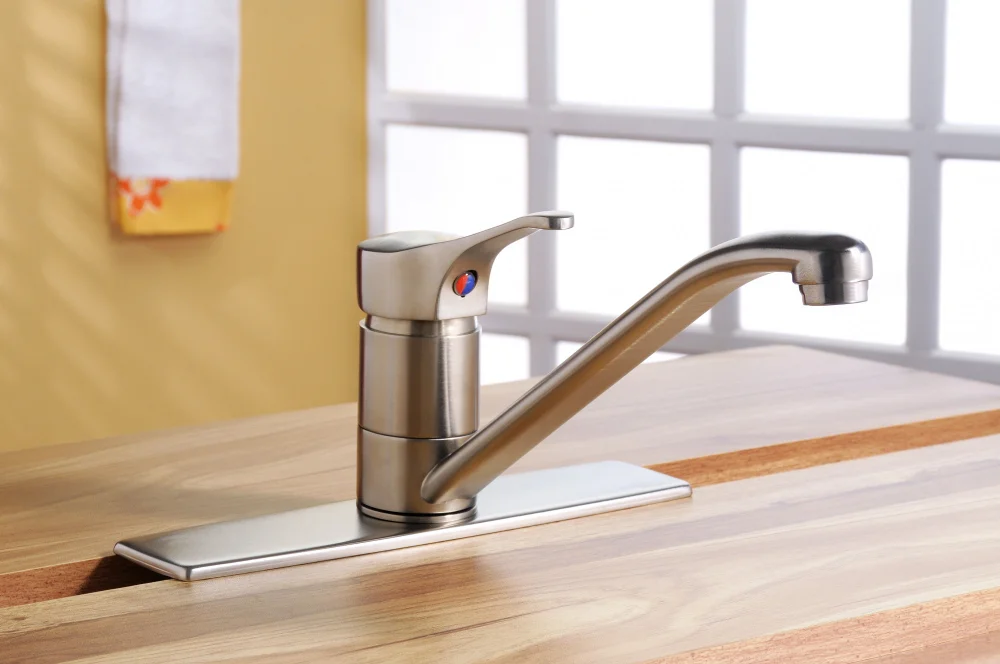
Some faucets require one hole, while others need two or three. If your sink has extra holes that aren’t needed for the faucet installation, you can use a deck plate to cover them up.
A deck plate is a metal or plastic plate that sits on top of the sink and covers any unused holes. It also provides additional stability for single-hole faucets by covering up excess space around the base.
When choosing a deck plate, make sure it matches your faucet finish and fits securely over all unused holes in your sink. Most manufacturers offer matching plates with their faucets so you can ensure everything looks cohesive.
Keep in mind that not all sinks are compatible with deck plates due to their shape or size limitations. Before purchasing one, check if it will fit properly on your specific type of sink.
Custom Sink Faucet Hole Considerations
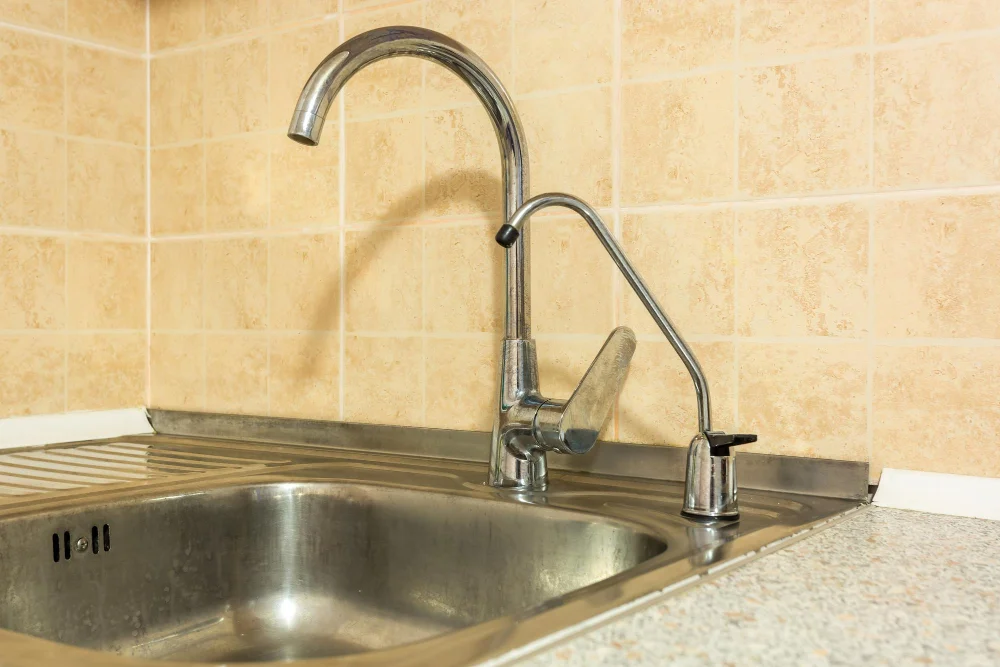
Custom sinks may require non-standard hole sizes or placements that differ from standard options. In some cases, you may need to drill additional holes in your sink or countertop to accommodate your chosen faucet.
Before drilling any new holes, be sure to consult with a professional installer who can advise on the best placement for your specific sink and faucet combination. It’s also important to ensure that any additional holes are drilled precisely and accurately so as not to damage the surrounding material.
When choosing a custom sink and faucet combination, keep in mind that certain styles of faucets may not work well with certain types of sinks. For example, vessel sinks typically require taller faucets while undermount sinks often work better with shorter spouts.
By taking these considerations into account when selecting a custom sink and kitchen faucet combo, you can ensure an easy installation process without damaging your beautiful new countertops!
FAQ
Are all kitchen sink faucet holes the same size?
No, while the standard kitchen sink faucet hole size is 1 3/8″ (1.375 inches or 34.925 mm) in diameter, sizes may vary depending on the specific make and model.
Are kitchen sink faucet holes universal?
Kitchen sink faucet holes are not universal, as they come in different styles with varying base plates and mounting hole sizes, such as the standard 1 3/8″, as well as 1″ and 1 1/2″ options.
What is the difference between a 2 hole and 3-hole kitchen faucet?
The difference between a 2-hole and 3-hole kitchen faucet is that a 2-hole sink allows for a single-hole faucet and an accessory, while a 3-hole sink permits two-handle faucets without accessories.
How do you determine the appropriate kitchen faucet hole size for a specific faucet model?
To determine the appropriate kitchen faucet hole size for a specific faucet model, refer to the manufacturer’s specifications or product documentation.
Can kitchen faucet hole sizes be adjusted or modified if needed?
Kitchen faucet hole sizes can be adjusted or modified if needed, depending on the specific requirements and configurations of your sink and plumbing.
What factors should be considered when choosing a kitchen faucet based on hole size and configuration?
When choosing a kitchen faucet based on hole size and configuration, consider factors such as the number of holes, their spacing, the faucet style, and compatibility with your sink or countertop.




